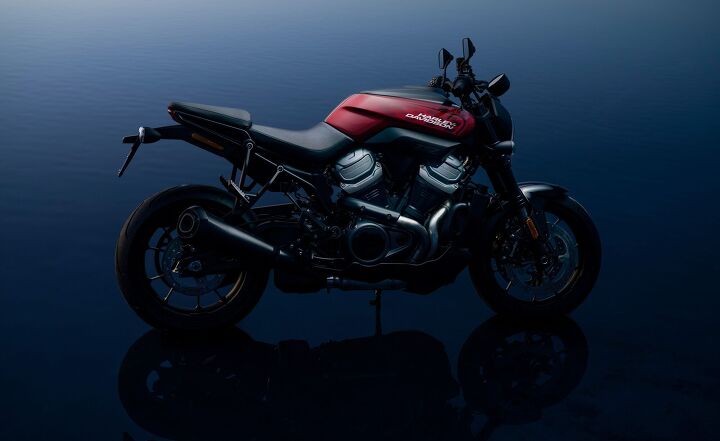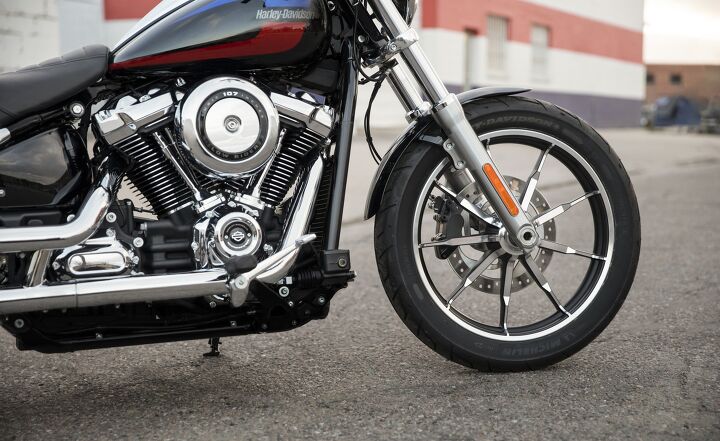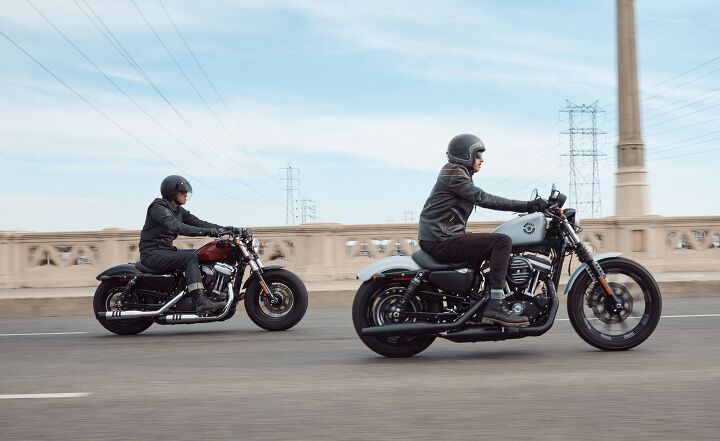In its second quarter 2020 presentation, Harley-Davidson provided an update on its Rewire strategy, clarifying specific details about the plan, and offered a few hints about its follow-up, the newly-christened Hardwire plan which will carry the company through 2021 to 2025. Moving forward, Harley-Davidson plans to reduce its model lineup by 30%, will concentrate its focus on 50 markets, and will proceed to launch its first adventure-touring model in 2021.
But first, the bad news. Through the first half of 2020, Harley-Davidson reported a net loss of $23 million including a loss of $92 million in the second quarter. Obviously, COVID-19 had a large impact on Harley-Davidson’s bottom line, but the restructuring costs of Rewire were also a factor.
From “More Roads” to “Rewire”
Where Does Harley-Davidson Go From Here?
As we’ve previously explained, the Rewire is a course-correcting shift in Harley-Davidson’s previous “More Roads” plan in response to decreasing sales and the ongoing impact of the COVID-19 pandemic. Until now, Harley-Davidson has only described the Rewire in very broad terms, with specific details trickling out slowly, such as the layoff of 700 employees and delaying the launch of the Pan America 1250 and Bronx 975.
According to Harley-Davidson, the layoffs were part of a company-wide effort to eliminate duplication, inefficiencies and complexities and contain costs. The restructuring will cost Harley-Davidson $42 million, but is expected to produce $100 million in savings each year.
While a lot of the lost jobs will be in manufacturing, some of it will be a result of Harley-Davidson adjusting its global operations. Harley previously said that Rewire will focus the company on the markets that matter. Harley-Davidson now explains that it will concentrate its business on approximately 50 markets worldwide, from its current reach of about 100 markets. The markets being retained are primarily in North America, Europe and parts of Asia, which represent the bulk of the company’s current sales volume and growth potential.
The pandemic forced Harley-Davidson to suspend production for several weeks, resulting in 40,388 fewer shipments over the quarter, and a 32% decrease in dealer inventory.
With its Q2 presentation, Harley-Davidson explained Rewire will include five key highlights:
- Streamlining planned motorcycle models by approximately 30 percent; balancing investments between current stronghold categories and new, high-potential segments
- Expanding product offerings of its best-selling, iconic motorcycles
- Delivering its first Adventure Touring motorcycle – Pan America 1250 – in 2021
- Shifting annual product launch timing from August to early in the first quarter
- Reinvigorating launch efforts including collaborations with key influencers to bring the brand and new products to drive brand desirability
Let’s break these down one at a time.
By our count, Harley-Davidson currently has 34 models in its U.S. lineup. An approximate 30% reduction would drop that to 24 models. That sounds like a big cut, but is easier to achieve than you would think. Most of Harley’s models share multiple components, creating a lot of overlap between different motorcycles. Even Jochen Zeitz, chairman and recently-appointed president and chief executive officer of Harley-Davidson admits the current product mix may be confusing for some people.
“We have extraordinary product and more product in the pipeline, but the complexity of our product lineup has been quite substantial,” says Zeitz. “Sometimes it’s even hard to know what product is what, and that complexity might be, for some customers, confusing at times, especially for those who come into the brand and would like to buy a new bike. That is not a huge problem but that is something that makes our lives from a product development and investment point of view more difficult.
Those 34 models includes CVO, Special and S versions of other models. Simply dropping the 107ci versions and making the 114ci used on the Special and S models standard on the base model would eliminate some product crossover. On that note, it wouldn’t be a surprise if Harley-Davidson drops the smaller engine completely in favor of a larger Milwaukee-Eight.
Another easy cut could be made by finally retiring its long-in-the-tooth Evolution engine. The Sportster line was already cut from seven models to just four for 2020, and we know the Evolution engine will not comply with Euro 5 standards, meaning they won’t be allowed to be sold in Europe after the end of the year.
Of course, Harley-Davidson will need some way to replace the Sportster which, along with the Street, represents about 22% of the company’s shipments. As we were first to report previously, Harley-Davidson has been working on a new OHV V-Twin engine that can incorporate variable valve timing for some time now, and a new generation of Sportster will have to come at some point. That hypothetical Sportster replacement would fit into the Rewire’s second point about “expanding product offerings of its best-selling, iconic motorcycles.”
The third point reiterates the Pan America 1250 being on track for a 2021 launch, and confirms Harley-Davidson’s commitment to expand into “new high-potential segments”. That’s later than the 2020 launch that Harley-Davidson was pushing as recently as May 31, but it won’t be alone, as another part of Rewire involves shifting all of its new model year launches and dealer meetings from August to early in the first quarter.

While the Pan America is on track for a 2021 launch, the timeline for the Bronx streetfighter remains unclear.
Not mentioned in Harley-Davidson’s presentation, however, was the Bronx, which is expected to use a smaller, 975cc version of the Pan America’s liquid-cooled DOHC Revolution Max engine. The Bronx was brought up during the Q&A portion of Harley-Davidson’s conference call, but the response from Zeitz was non-committal.
“I think that at this time, adventure-touring will be the focus going into next year,” says Zeitz. “Other product line related decisions, we will be revealing in real time, so it’s not something we can or want to talk about at this time.”
Zeitz repeated that answer when asked about the planned small-displacement model with China’s Qianjiang. Zeitz says Harley-Davidson will provide further detail in the fourth quarter.
Moving product launches from late summer to early in the new year is intended to bring the announcements closer to the start of the riding season. This will have an effect on marketing costs, as there’s less run-up between product announcement and arrival in showrooms. It will also mean Harley-Davidson won’t have a major presence in the fall motorcycle show season. That won’t matter much, at least, for this year as both Intermot and EICMA have been cancelled for 2020. The pandemic has forced the industry to rethink how product launches will be handled. So, it will be interesting to see if other manufacturers will make a similar shift.
The fifth highlight about using “key influencers” to market the brand has already started, with a new social media campaign directed by actor Jason Momoa.
As significant as the Rewire is, it’s important to remember that it’s a transitional plan, one focused on streamlining the company and preparing it for a new, longer-term business plan. Dubbed the Hardwire, the new strategic plan will outline Harley-Davidson’s operations from 2021 through 2025. Further details about the Hardwire will be clarified during the fourth quarter, but it will be building on a foundation being laid by the Rewire.
Become a Motorcycle.com insider. Get the latest motorcycle news first by subscribing to our newsletter here.
The post Harley-Davidson Provides Update on Rewire, New Hardwire Plan Coming in Q4 appeared first on Motorcycle.com.
【Top 10 Malaysia & Singapore Most Beautiful Girls】Have you follow?

